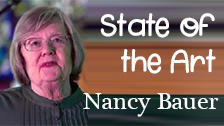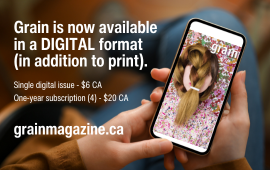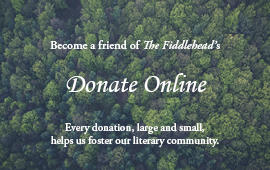
The Education of Nancy Bauer
My father’s father loved to learn; he worked in his quarry all week and then on Saturday took the bus to Lowell to get books from the library. My grandfather had absorbed this love from his mother; he always gave her books for Christmas. She presented programs based on these books to groups in her area. As a consequence my father loved to learn also; he was one of the best customers of Boston’s Vic the Bookseller. On my mother’s side, my blacksmith grandfather loved to study; I have his study bible and his Greek/English New Testament.
My husband’s mother also loved to learn; her letters from her first trip to Europe were insightful and joyful. Her father did too; he and his co-workers paid someone to read to him while they made cigars. Our parents read to us. Their cherished hope was to be able to send us to college.
Happily we passed this love onto our children. After Bill finished his PhD thesis on 18th century literature, his delight turned everywhere: learning to make hooked rugs, to cut glass and create objet d’arts from it, to garden, to knit, to grow gourds and decorate them, to translate from French, to make things from concrete — on and on.
Miraculously we had transported ourselves to Fredericton where I met poet Joe Sherman who became editor of Arts Atlantic. He couldn’t find anyone to write about New Brunswick art and asked me to take a shot at it. Fools rush in where angels fear to tread. Because I had no formal training in art, I had to study hard. For my first assignment, David Silverberg, I read everything I could about engraving, interviewed him several times, watched him work, studied as much of his art as I could find, and laboured over the article. I was excited to be meeting art in the flesh — his imagination, work habits, technical expertise.
Twenty Arts Atlantic assignments followed. After George Fry had taken my creative writing course, he asked me to write an introduction to his book The Landscape of Crafts. I knew next to nothing about crafts. More hubris. Because of this introduction, Neil Reynolds, the newly appointed editor of the Telegraph-Journal, asked me to write profiles of craftspeople for the insert he was creating, “The New Brunswick Reader.” It was a weekly, so I had to get up to snuff more quickly about the techniques. Bill retired and could go with me when I was interviewing the craftspeople. He loved it.
When Jamie Irving created “Salon,” I was asked to write a column already titled “State of the Art.” I thought I should add theatre and music to my repertoire of visual arts, crafts, and literature. I realized early on that I had to have a more narrow focus so concentrated on New Brunswick. Bill’s illness and later my broken hip made it difficult to travel as I had done before in my self-education, but events came to Fredericton — art exhibits, symphony concerts, TNB/UNB/STU plays. Artists, writers, craftspeople even came to visit me.
For music and theatre I wasn’t starting from scratch. I had taken piano lessons, learned to play the baritone horn for the school band, and had taken a basic music course in college. For my columns on concerts, I could study the programme notes, attend the wonderful talks by symphony director Newnham, and of course listen closely. For the theatre, I had the help of my daughter, a professional actor with an MFA in theatre and a ton of experience.
A few weeks ago artist Stephen May and his publisher Keith Helmuth asked me to write an introduction to Stephen’s book tentatively titled The Wisdom of Beauty. Stephen is my son’s best friend. I’ve spent many a happy hour talking with him about his art, practice, philosophy, passion. I’ve studied his art and own nine of his works, but his request has required me to be more systematic in my education.
Now The Fiddlehead has asked me to write a blog for their website, “in the same style as your TJ column.”
R. L. Stevenson told children, “The world is so full of a number of things, / I’m sure we should all be as happy as kings.” A world full of art; of wildflowers, their names and habitats; of the politics, geography and history of Turkey; of how to make a film.
How do we educate our children so that they will be able to self-educate themselves their whole lives? Joy and delight, as Stevenson says. Opportunities: Google and Wikipedia are helpful, but nothing beats books for depth of understanding and actual human beings for diversity of spirit.
___
Nancy Bauer has published 5 novels with Oberon and Goose Lane Editions, many short stories, and over 80 articles about arts, crafts, and books. She received the Alden Nowlan Excellence Award, the CBC Award for a Short Story, and from Senator David Adams Richards the Senate 150th medal. She co-founded the Maritime Writers’ Workshop, published 25 New Brunswick Chapbooks, was on the organizing committee of WFNB, a charter member of Gallery Connexion, a member of the NB Arts Board and on several Canada Council juries. She is presently on the board of Word Feast. She was Writer-in-Residence at UNB and Bemidji State University. She has taught at UNB in various capacities and at writing workshops all over the Maritimes. For ten years Bauer wrote a weekly column on the arts for the Telegraph Journal. She was born in Massachusetts in 1934, moved to New Brunswick in 1965, and is a dual Canadian/American citizen. Her husband Bill Bauer died in 2010. They have three children and four grandchildren.












Comments
State of the Art
Nancy Bauer
column
Nancy Bauer
Add new comment